- Author: Saoimanu Sope
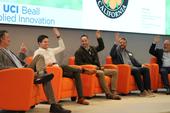
Agriculture generates $59 billion and employs nearly 400,000 individuals in California. The industry, however, is often threatened by challenges like climate change, land conversion and water scarcity. Motivated to act, Sustain Southern California – an organization associated with UC Irvine Beall Applied Innovation – hosted a roundtable discussion on Feb. 20 featuring subject matter experts including Darren Haver, director of UC Agriculture and Natural Resources' Research and Extension Center System.
During his keynote address, Jose Arriaga, Orange County Agricultural Commissioner, defined sustainability as food and...
- Author: Trina Kleist, UC Davis
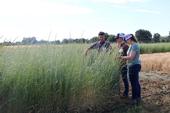
One more reason to adopt sustainable cultivation
California wheat farmers could both maintain their yields and improve soil health by growing annual wheat without tilling the soil year after year.
This could be one more encouragement to farmers to adopt a sustainable practice commonly called conservation tillage, no-till or minimum-till cultivation, impacting how we grow a grain that supplies about 20 percent of the calories and protein for people around the world.
A new study, by a team led by Mark Lundy, University of California Cooperative Extension specialist in UC Davis' Department of Plant...
- Author: Pamela Kan-Rice
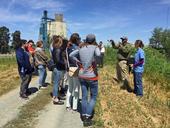
UC Global Food Initiative student fellows from University of California campuses throughout the state gathered for a springtime field trip in the Central Valley to learn more about the relationships between food, farming and the environment.
The day-long tour, hosted by UC Agriculture and Natural Resources, began at a farm that is maintained to support wildlife in the breezy Sacramento-San Joaquin River delta region. The GFI fellows also viewed a habitat restoration project at LangeTwins Winery then watched freshly harvested cherries being processed at Morada Produce's packing plant. They wrapped up the day with a tour...
- Author: Aubrey White
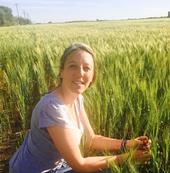
For many years, a key international strategy to ending hunger has been to grow more food: push for higher yields, develop ways for farmers to intensify their farming, focus on technologies that drive both. But that focus may be shifting towards another strategy that better accounts for the environment and human well-being – agroecology.
Barbara Gemill-Herren, a retired officer from the Food and Agriculture Organization of the United Nations, spoke recently at UC Davis of the ongoing process at the United Nations to determine an international strategy for agricultural development.
For many, a new paradigm needs to strike a balance between supporting small-scale farmers, supporting healthy ecosystems, and bringing in...
- Author: Rachael Freeman Long
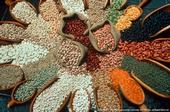
Do you have your “finger on the pulse” of foods that pack a powerful nutritious punch and trending globally? Then you may know that the United Nations has declared 2016 as The International Year of Pulses. But you may not know what pulses are or California's role in the pulse industry.
Pulses are leguminous crops harvested solely for the dry seed. They include dried beans, lentils, and peas – those staple, nutritious and humble foods that our ancestors began cultivating more than 10,000 years ago.
The United Nations strives to raise awareness about pulses through its slogan, “Nutritious Seeds for a Sustainable Future.” The...



